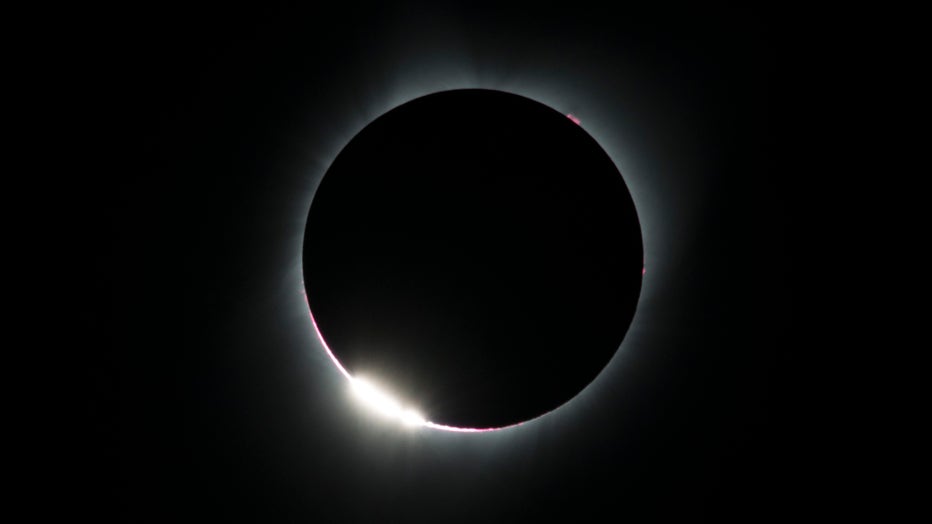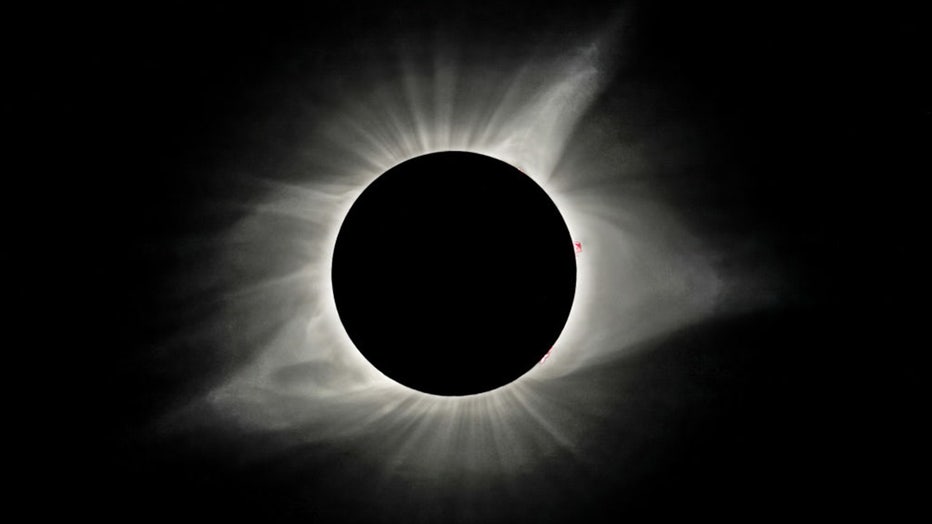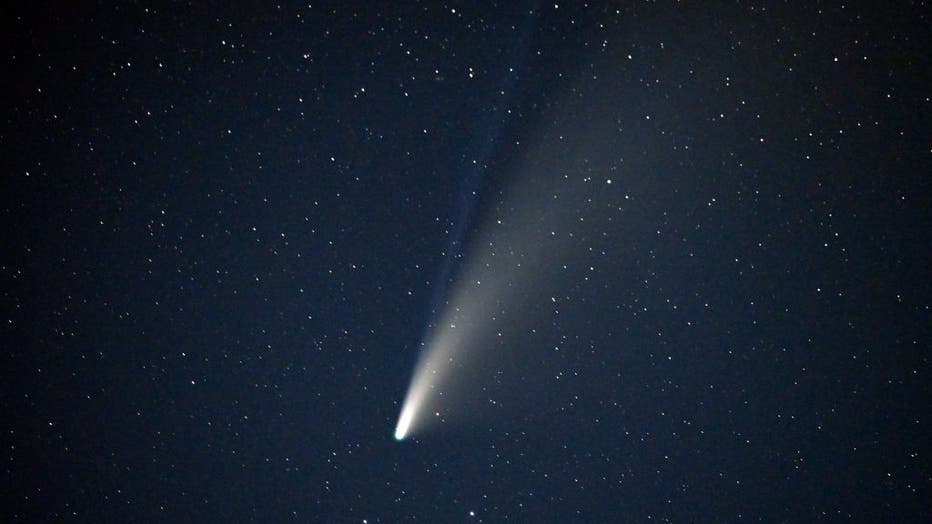2024 Solar Eclipse: Baily's Beads, diamond ring, and the sun's corona - here's what you'll see
Explaining the coming solar eclipse - and why we have to protect our eyes
Here's the most important part - if you want to see it, but you don't have special glasses - don't look up. Even a sliver of sun can do damage. Special glasses are needed - regular sunglasses are useless.
(FOX 2) - Those seeking out a place to watch the 2024 solar eclipse will be familiar with the term path of totality. The predicted path of the moon moving between the sun and the Earth will be one of the busiest stretches of the continental U.S. on Monday.
But there's much more to the awe-inspiring phenomenon that will grace more than a dozen states, including a sliver of Michigan, on April 8.
When the eclipse reaches its fullest and the sun is completely blocked from view, the most obvious place to look will be at up. But what's actually on display as this astrological event takes place?
On Earth, an "effect of awe" will be in place among its viewers, says Dr. Tyler Nordgren, who wrote the book ‘Sun Moon Earth: The History of Solar Eclipses from Omens of Doom to Einstein and Exoplanets.’
"They feel a sense of humility," he says of those watching the eclipse. "For those moments, they are not the most important things in the universe. If you feel that sense of humility, you begin to connect with others and the world around you."
Nordgren told FOX 2 photojournalist Coulter Stuart about this "deeply profound" feeling that many experience in the middle of totality. If the eclipse was purely a scientific phenomenon, then it wouldn't draw people from every corner of the Earth.
"It's not just the alignment of the sun and moon and the Earth…it is the alignment of the sun and the moon with you, the viewer," he said.
Some may be filled with joy while others could have tears streaming down their face. Nordgren said he's never seen someone not react to the event. Beyond the personal feelings that each person will experience is an array of visual spectacles that can only be seen during an eclipse.
RELATED: Will the weather disrupt Michigan's total solar eclipse?
Here are a few:
Baily's Beads
In the moments before a total eclipse happens, little bits of light will shine around the edge of the moon. What looks like illuminated beads bordering the moon is actually light shining through lunar valleys.
They shimmer ever so slightly before disappearing behind the moon.
Named after Francis Baily who explained them in 1836, they help exhibit just how varied the topography of the moon is.
Just like the eclipse, these should not be viewed without proper eye protection.

TOPSHOT - The "diamond ring effect" is seen during a total solar eclipse as seen from the Lowell Observatory Solar Eclipse Experience on August 21, 2017 in Madras, Oregon. Millions will be able to witness the total eclipse that will touch land in Ore
Corona
The corona is an outer layer of the sun and is usually hidden by the light produced by the sun during the day. Unless someone has special instruments, this atmospheric level can't be seen - unless an eclipse is taking place.
"When you look up at totality, that moment when sun goes black, it's surrounded by these ghostly tendrils," Nordgren said. "It's the sun's outer atmosphere."
Ironically, the corona is 2 million degrees hotter than the surface of the sun, despite being much farther away. It's the hottest thing that humans will ever look at.
Not everything is fully understood about the corona, but for a few minutes on Monday, it will be visible.

FILE - The sun's corona is visible as the moon obscures the sun during the Great American Solar Eclipse at Madras High School in Madras, Oregon, on Monday, August 21, 2017.
Diamond Ring
The diamond ring effect happens at the moment the sun becomes visible.
Just as the moon moves away, the sun's light will burst from the first place that becomes uncovered, shining a little like a diamond that's set on a ring.

TURKEY - FEBRUARY 09: This picture was taken moments before second contact. The bright beads of light visible here are caused by the last rays of sunlight shining through the deepest valleys along the lunar limb moments before totality starts. These
Shadow Bands
Another mysterious feature of eclipses happens in the last few minutes before totality is reached - as well as the few minutes after it ends. A narrow beam of light that Nordgren characterized as "pencil-thin" will shine.
As that light travels to Earth, bending and warping with the temperatures and pressures present in the planet's atmosphere, it'll start to ripple - sort of like looking up from the bottom of a swimming pool that's filled with water.
The mediums that the light is traveling through will refract into ribbons.
These are also visible during an eclipse, however, many don't see them because they happen on the ground around people. Eclipse chasers will likely be looking up at the clips instead of the white-colored walls and the ground where they're visible.
The ‘devil comet’
It won't just be an eclipse that's visible in the sky during totality. A comet that's known as 12P/Pons-Brooks will be passing through the sky at the same time the eclipse takes place.
Aptly named the ‘devil comet’ it gets its name from the massive horned tail that follows it as it nears the sun. What's normally a "dirty snowball of ice, water, and other gases" as Nordgren puts it will begin to vaporize as it gets close to the center of the solar system.
It can get so big that it spans the distance between planets.
This comet will be visible during the eclipse - but not by much. Comet viewing is best done when there is no light in the sky and Nordgren suggested people not spend much time looking for it during the eclipse.

TOPSHOT - The Comet NEOWISE or C/2020 F3, with its two tails visible, is seen in the sky above Goldfield, Nevada on July 18, 2020. The Comet C/2020 F3 was discovered March 27, 2020, by NEOWISE, the Near Earth Object Wide-field Infrared Survey Explore


